What are Mice?
Mice are a rodent species and are common intruders in homes and businesses. The house mouse is one of the most popular species. Their oval-shaped bodies are covered in light brown, gray or lighter-colored fur. They also have lighter-colored underbellies. Their tails are as long or shorter than their bodies and have a thin fur layer. Their tails grow from 2 1/2 to 3 1/2 inches in length to about 2 1/2 to 3 1/2 inches. They have small ears and a pointed nose.
There are many different types of mice, they are very similar in size and weight. The most distinctive distinction between these species is their coloration.
What Kinds of Mice are There?
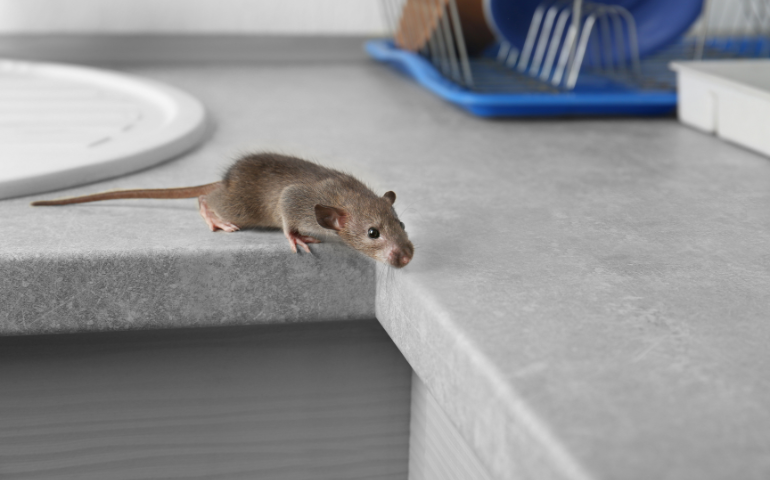
This is one of the most common mice species found worldwide. House mice are often considered pests when they invade homes and buildings.
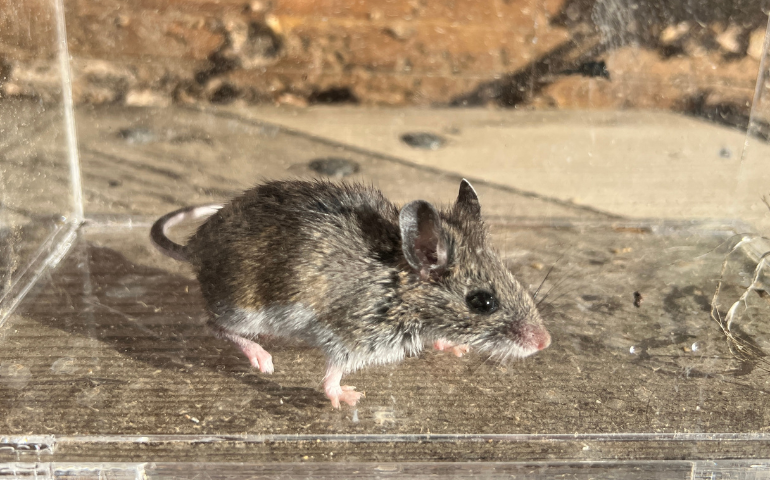
Deer mice are native to North America and are known for their distinctive coloring, with a white underbelly and a brownish-gray back. Some species of deer mice can carry hantavirus, which can be transmitted to humans.
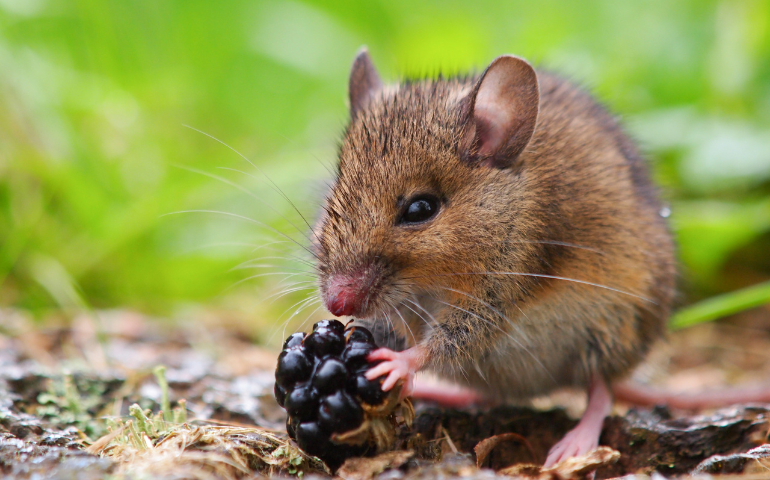
Field mice are typically found in outdoor habitats such as fields, meadows, and gardens. They have a diet that includes seeds, fruits, and insects.
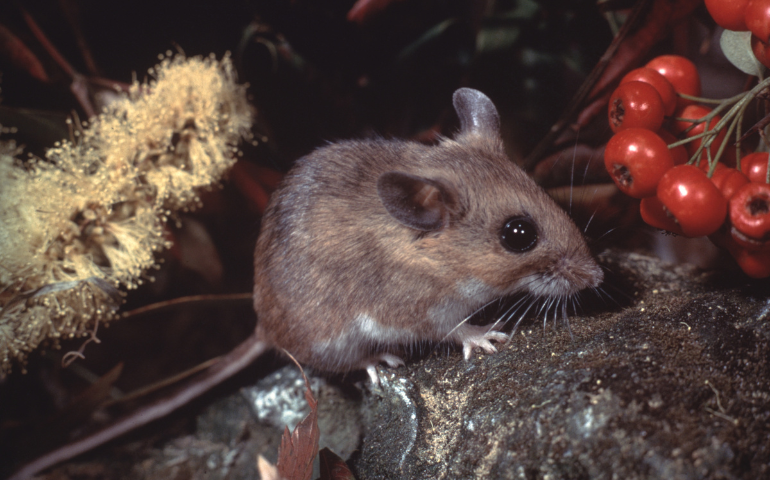
Native to North America, white-footed mice are named for their distinctive white feet. They are found in a variety of habitats, including forests and fields.
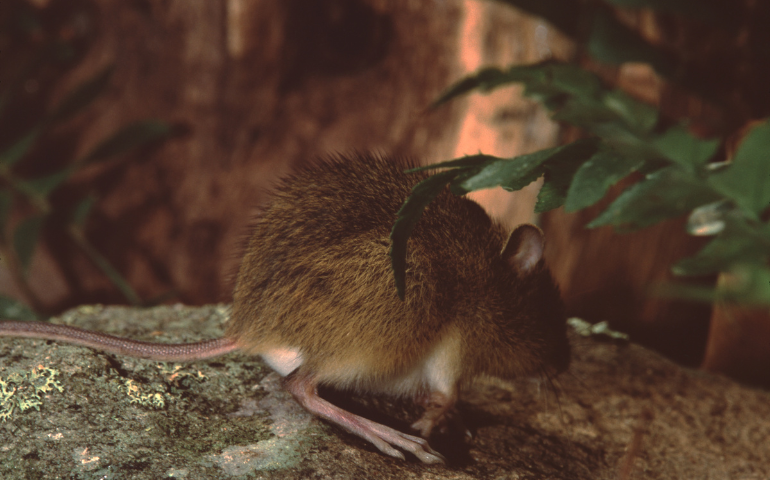
Jumping mice have long hind legs adapted for jumping. They are found in North America and are known for their distinctive leaping behavior.
Behavior & Diet
Each of the three species of mouse is primarily nocturnal, and can quickly escape from danger. Both the house mouse and white-footed mice are excellent climbers and swimmers. Mice tend to stay close to their nest and very rarely travel further than 100 feet away from their nest. Deer mice and white-footed mice are less likely to venture further from their nests.
Mice can store food in their burrows or nests and are considered to be omnivores. Mice eat many types of plants, including stems, leaves, seeds, roots, fruits and insects, in wild settings. Deer mice also eat their own feces. They will also eat anything that is easily accessible and left behind when they are in close proximity to people.
Although they prefer to live close to people, the house mouse will also live in woods and fields. However, they are less likely to wander too far from buildings, making them more likely to infest urban areas. They seek shelter as the temperature drops. This shelter is often a barn, storage shed, or home. There are many habitats for the deer mouse, including deserts, forests, and agricultural fields. It is most commonly found in prairies, woodlands, and bushy areas. White-footed mice prefer to live in woodlands, suburban, and agricultural areas. Rodent surveys have revealed that white-footed mice were the most common small rodents in mixed hardwood forests in the eastern half of our country, as well as brushy areas adjacent to agricultural fields.
Reproduction
The house mouse reproduces all year round inside homes and other structures. In its natural environment, however, the breeding season is usually from April to September. The average litter size for females is between 3-12 litters per year. However, it is usually five to six litters. At five to six weeks of age, females are sexually mature and can live up to two years in wild areas.
Reproduction is not possible in the typical environment of deer mice. The litter size can vary and could range from 1-11 offspring to 4-6 in the average litter. As you might expect reproduction is higher in warmer areas than in colder ones.
The northern region of the country sees white-footed mice being born in spring, late summer or fall. In the southern part of its distribution, breeding occurs over a longer time. The average age of an adult is 38-44 days. They have 2-4 litters per calendar year and each litter contains between 2-9 young. The litter size of the female increases with the number of her children. It peaks at the fifth litter or sixth litter. As she gets older, it begins to decline. The wild white-footed mouse lives for about one year.
The Stages of The Mouse Life Cycle
- The heat is for between 4 and 5 days in females.
- After three weeks, rodents can give birth if they are pregnant.
- A litter can contain 5-8 pups and females may reproduce up to 10 times each year.
- The mouse’s first life cycle begins with newborns who are blind and hairless.
- Baby mice gradually gain sight and mobility after two weeks.
- About 2 months after their birth, mice reach sexual maturity and can mate.
Mouse Infestation Signs
A mouse is a sign of an infestation. This is especially true considering that mice are highly secretive and nocturnal. A mouse’s appearance can be a sign of an infestation, as other adults have taken up residence in the safer, more private areas for them to nest. These animals are often seen running or scurrying to avoid being disturbed.
Mice droppings can be found anywhere mice travel, live or stop to eat and collect food. It is possible to remove droppings from a structure and then inspect it again later. RESPIRATORY PROTECTION MUST BE USED IF YOU REMOVE MICE DROPPINGS.
A mouse infestation can also manifest itself in the form of tracks and footprints left behind in dusty places.
Because mice are nest builders and nest-builders, it is easy to see evidence of mouse activity when you see nests in burrows and wall voids providing protection.
Mice love to chew and gnaw on objects in their environment. Mice can be identified by chewed food and paper fragments, as well as gnaw marks on wood edges or other hard materials. A mouse infestation could be suspected if food packages are chewed into.
An infection can also be characterized by noises like mice running from one place to the next or gnawing on walls or attics.
A mouse infestation is characterized by unpleasant odors such as urine, urine and fecal deposits.
How To Get Rid of Mice and Mouse Prevention Tips
When it comes to eliminating mice from your home and preventing their return, Alta Pest Control offers comprehensive solutions tailored to your needs.
1. Sealing Entry Points:
Our skilled technicians thoroughly inspect your property to identify and seal all potential entry points for mice. Using durable materials and proven techniques, we ensure that cracks, crevices, and holes larger than a pencil cap are securely sealed, preventing mice from infiltrating your home.
2. Professional Mouse Trapping and Baiting:
Alta Pest Control employs advanced trapping and baiting methods to effectively capture and eliminate existing mouse populations. Our trained professionals strategically place traps and baits in key areas, targeting known pathways and entry points. Regular monitoring and maintenance ensure the continued effectiveness of our trapping and baiting solutions.
3. Preventive Maintenance for Long-Term Results:
Beyond immediate eradication, our preventive maintenance services are essential for long-term mouse control. Alta Pest Control offers regular pest maintenance programs designed to keep your home pest-free year-round. Through scheduled inspections and treatments, we proactively address potential issues before they escalate, minimizing the risk of future infestations.
With Alta Pest Control’s expertise and commitment to excellence, you can trust us to effectively eliminate mice from your home and implement proactive measures to prevent their return. Contact us today for a thorough assessment and customized mouse control solutions tailored to your specific needs.
